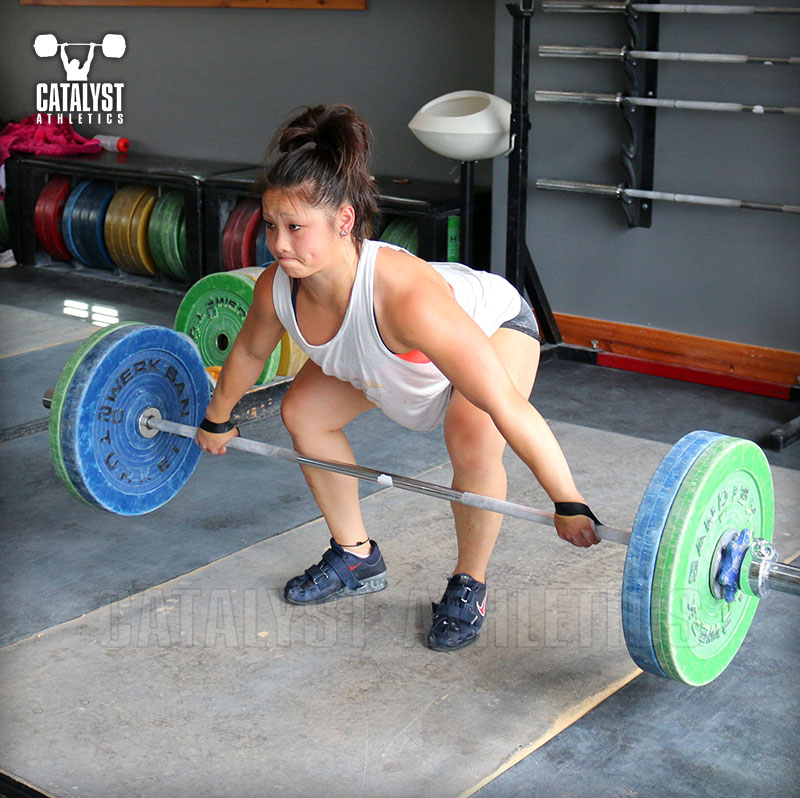Articles
Competition Lift Variation Ratios: Don't Worry Too Much
May 5 2016

May 5 2016

A pretty common question is what kind of relative weights a lifter should expect to see in variations of a competition lift. Some of these make sense and some guidelines can be provided, but others vary too much to really provide useful numbers. The primary ones I'm talking about here are things like hang or block snatches and cleans relative to the full lifts.
Generally speaking, we would expect a hang or block lift to be less than a lift from the floor - this makes sense intuitively: less time and distance to accelerate the barbell upward should mean that an athlete can't lift as much.
However, in a decent number of cases, even with fairly high level lifters, a partial lift from the hang, or in particular the blocks, can exceed the lifter's best from the floor. This can be for a number of reasons, but typically it indicates a problem with the lift from the floor, such as poor or inconsistent positioning, postural weakness in the early pull, incorrect speed or rhythm, etc. A certain block position (usually at the knee or right below the knee) puts the lifter in the perfect position and eliminates the problems normally created in the pull prior to this position.
While it may be indicative of a problem, it's not the end of the world and you don't need to completely rewrite your or your lifter's training program. Take advantage of their ability to do well in a certain hang or block position by keeping it in their training program - this is still good training for the lift, and in particular will help with confidence. Further, athlete's enjoy the lifts they're best at, and enjoying training makes lifters successful.
However, also use this situation to help diagnose the problem that's causing this unusual ratio and adjust the rest of the training program to address it. This will often mean the addition of certain pull or deadlift variations, snatch or clean complexes that include pulls before the lift, and technique primers focusing on the pull from the floor.
Generally speaking, we would expect a hang or block lift to be less than a lift from the floor - this makes sense intuitively: less time and distance to accelerate the barbell upward should mean that an athlete can't lift as much.
However, in a decent number of cases, even with fairly high level lifters, a partial lift from the hang, or in particular the blocks, can exceed the lifter's best from the floor. This can be for a number of reasons, but typically it indicates a problem with the lift from the floor, such as poor or inconsistent positioning, postural weakness in the early pull, incorrect speed or rhythm, etc. A certain block position (usually at the knee or right below the knee) puts the lifter in the perfect position and eliminates the problems normally created in the pull prior to this position.
While it may be indicative of a problem, it's not the end of the world and you don't need to completely rewrite your or your lifter's training program. Take advantage of their ability to do well in a certain hang or block position by keeping it in their training program - this is still good training for the lift, and in particular will help with confidence. Further, athlete's enjoy the lifts they're best at, and enjoying training makes lifters successful.
However, also use this situation to help diagnose the problem that's causing this unusual ratio and adjust the rest of the training program to address it. This will often mean the addition of certain pull or deadlift variations, snatch or clean complexes that include pulls before the lift, and technique primers focusing on the pull from the floor.
